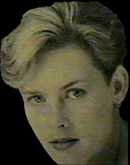:: The S.I.C.L.E. Cell ::
my view from the prison of a SICLE (Self-Imposed Child Loss Experience) due to debilitating maternal disease| :: After abortion[>] |
| :: RealChoice[>] |
| :: Silent Rain Drops[>] |
| :: Stanek![>] |
:: Monday, September 15, 2003 ::
Ever since my son saw his first dead person (on one of our visits to friends who own a funeral home) he has been fascinated with dead things. This is why, at the library a few weeks ago, he picked out the book The Dead Bird by Margaret Wise Brown. We normally pick out around 32 books, so I only just got around to reading it.
The book is quite juvenile, just the way a juvenile book should be. The illustrations and format are simple and touching. So simple, so touching and so childlike in fact, that I found myself suddenly rather melancholy, even tearful.
It seems silly, and I want to know more about the reaction.
The story opens with a dead bird lying in the green grass. Children come along, discover the bird, and begin an exploration of death and its process. The bird is still warm but that warmth quickly fades. Rigor mortis is sped up for this book, and the bird's tiny legs stiffen, the head no longer flops. The book informs us that this is the way death is. This is what it looks like, what it feels like in our hands.
"The children were very sorry the bird was dead and could never fly again. But they were glad they had found it, because now they could dig a grave in the woods and bury it. They could have a funeral and sing to it the way grown-up people did when someone died."
This "insignificant" bird is then given an elaborate funeral where he is wrapped in warm sweet-firns and grapevine leaves and committed to the ground with song. Marking the grave are little white violets and yellow star flowers, along with a homemade tombstone that says: "Here lies a bird that is dead."
I think, for a mom with a SICLE, this book can represent caring deeply for someone that the rest of the world seems to think is insignificant and cares very little for if at all. I could identify with the children and appreciate their lengthy efforts to express their regard for the little one.
"And every day, until they forgot, they went and sang to their little dead bird and put fresh flowers on his grave."
The last illustration (by Remy Charlip) shows a field of ball-playing children who have rejoined the world, yet just beyond them a violet covered grave sits in the forest.
This could be a marvelous illustration for the "post-abortion healing" movement.
For me, however, I can only relate to the proximity of the grave and the playing space of the children. The loss of my child seems always at least that close to everything else that goes on in my life.
:: ashli 9:16 AM # ::
...
